Along the Yoshida River 吉田川周辺
|
|
|
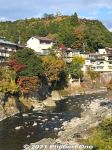
Running through the heart of Gujo-Hachiman, scenic Yoshida River is lined with tourist sights. The castle is on the top of the mountain. The rivers serve as natural moats for the castle.
|
|
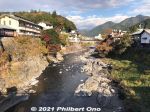
Yoshida River in Gujo-Hachiman looking upstream as seen from Miyagase Bridge. In summer, people fish for ayu sweetfish or swim in the river.
|
|
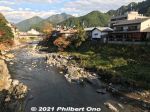
Yoshida River in Gujo-Hachiman looking upstream. There are also cherry blossoms in spring.
|
|
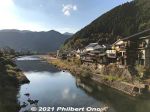
Yoshida River in Gujo-Hachiman looking downstream toward Nagara River.
|
|
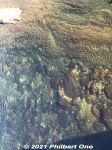
Yoshida River's clear and clean water.
|
|
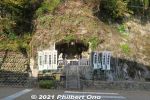
Roadside monument for a poem by Orikuchi Shinobu in 1919. It was a memorial for the victims of a major fire in the northern part of town.
|
|
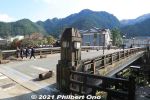
Shinbashi Bridge over Yoshida River. Cross this bridge to the Former Hachiman Town Hall and you will be in Minami-machi or the southern part of town.
|
|
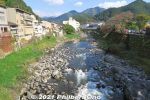
Yoshida River as seen from Shinbashi Bridge.
|
|
|
|
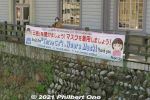
COVID-19 countermeasures.
|
|
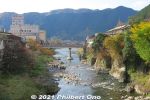
Looking downstream on Yoshida River. Miyagase Bridge can be seen.
|
|
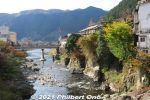
Looking downstream on Yoshida River from Shinbashi Bridge.
|
|
|
|
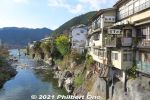
Looking downstream on Yoshida River from Shinbashi Bridge.
|
|
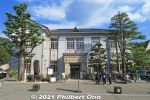
Former Hachiman Town Hall was built in 1936 and served as the Hachiman Town Hall until 1994. It now houses a tourist information center, souvenir shop, and restaurant. 郡上八幡旧庁舎記念館The large plaza in front of the building is one of the main venues for the Gujo Odori Dance held in summer.
|
|
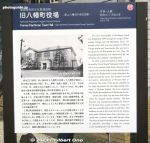
About the Former Hachiman Town Hall.
|
|
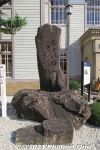
In front of the former Hachiman Town Hall is this monument marking the origin of the Gujo Odori Dance.
|
|

Gift shop inside Former Hachiman Town Hall.
|
|
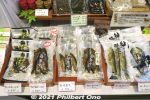
Ayu sweetfish.
|
|
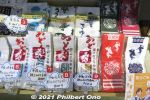
Gujo Odori dance tenugui hand towels.
|
|
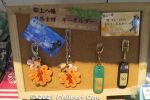
Gujo Odori dance key chains.
|
|
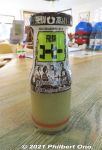
Hida Coffee, locally produced coffee milk.
|
|

Cafe menu. Reasonable prices.
|
|
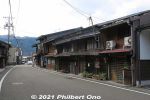
Traditional-looking homes.
|
|
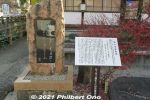
Monument for Noguchi Ujo, poet and lyricist of children's songs and folk music. He composed nine verses of the Gujo Odori song "Kawasaki".
|
|

About Noguchi Ujo and his poem about the beautiful local scenery. 野口雨情歌碑
|
|
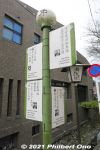
Directional signs in Gujo-Hachiman includes English.
|
|
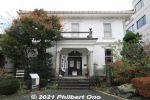
Former Hayashi Clinic. It was closed when I visited.
|
|
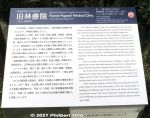
About the former Hayashi Clinic that was donated to the city.
|
|
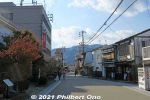
Gujo-Hachiman Post Office on the left.
|
|
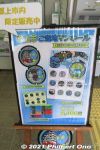
In the post office, stamps showing Gujo-Hachiman's picture manholes.
|
|
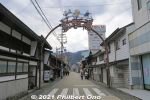
Shinmachi-dori street is the main street in the southern part of town south of Yoshida River.
|
|
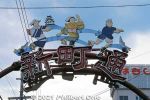
Shinmachi-dori street sign with Gujo Odori dancers.
|
|
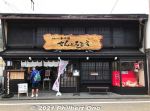
Gujo-Hachiman is also famous for food replicas which were invented by Gujo-Hachiman native Iwasaki Takizo (1895–1965). This shop called Sample Kobo displays a large sample of them. Also for sale. サンプル工房
|
|
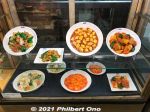
Sample Kobo factory for food replicas which were invented in Gujo-Hachiman. Looks delicious. サンプル工房
|
|
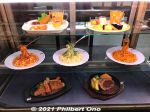
Gujo-Hachiman native Iwasaki Takizo (1895–1965) invented the ubiquitous food replicas we see today in restaurants in Japan.
|
|
|
|
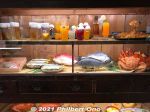
Gujo-Hachiman today makes over 50% of Japan's food replicas. Iwasaki made his first food replica, an omelette, in 1932.
|
|
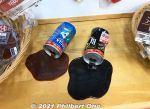
They also offer short lessons to make your own food replicas like spilled coffee.
|
|
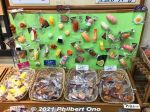
Fake sushi on key chains.
|
|

Gujo-Hachiman has a few traditional townscape streets.
|
|
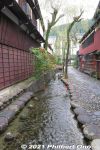
Gujo-Hachiman has a few traditional townscape streets. This is Yanaka Mizu no Komichi (やなか水のこみち). Narrow alley with embedded stones.
|
|
|
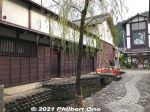
Yanaka Mizu no Komichi (やなか水のこみち). Narrow alley with embedded stones.
|
|
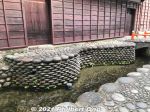
Yanaka Mizu no Komichi, narrow alley with embedded stones.
|
|
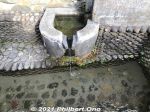
Yanaka Mizu no Komichi
|
|
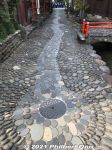
Yanaka Mizu no Komichi with embedded stones.
|
|
|
|
|
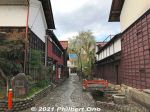
Yanaka Mizu no Komichi
|
|
|
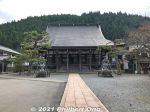
Ganrenji Temple, belonging to the Jodo Shinshu Otani Sect. 願蓮寺
|
|
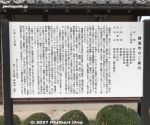
About Ganrenji in Japanese.
|
|
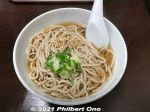
Real soba.
|
|
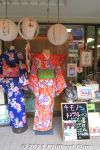
Kimono makeover shop to dress in kimono (or hakama for men) and stroll around to take pictures amid the traditional townscapes.
|
|
|
|
|